Themed collection Journal of Materials Chemistry C Emerging Investigators

Journal of Materials Chemistry C profiles: contributors to the Emerging Investigators 2020 issue
Journal of Materials Chemistry C profiles contributors to the Emerging Investigators issue.
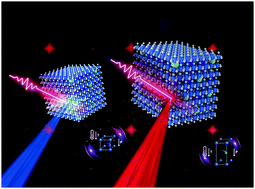
J. Mater. Chem. C, 2020,8, 10490-10497
https://doi.org/10.1039/D0TC90152K
Harnessing biological applications of quantum materials: opportunities and precautions
Biological applications of quantum materials require an intimate material-biology interface. Thus, parallel toxicological studies should be performed so that biological interactions can be considered as a separate and critical performance attribute.

J. Mater. Chem. C, 2020,8, 10498-10525
https://doi.org/10.1039/D0TC02429E
Entangled light–matter interactions and spectroscopy
Entangled photons exhibit non-classical light–matter interactions that create new opportunities in materials and molecular science.
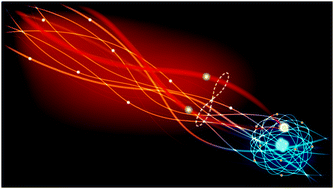
J. Mater. Chem. C, 2020,8, 10732-10741
https://doi.org/10.1039/D0TC02300K
Recent advances in materials and device technologies for soft active matrix electronics
This review paper provides an overview of the recent developments in flexible and stretchable active matrix electronics for various applications.
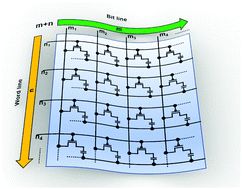
J. Mater. Chem. C, 2020,8, 10719-10731
https://doi.org/10.1039/D0TC02160A
Two-dimensional conjugated polymer films via liquid-interface-assisted synthesis toward organic electronic devices
Development of conjugated polymers in two dimensions via liquid-interface-assisted synthesis as active layers for use in electronic devices.
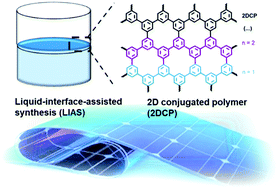
J. Mater. Chem. C, 2020,8, 10696-10718
https://doi.org/10.1039/D0TC01586E
Review of defect chemistry in fluorite-structure ferroelectrics for future electronic devices
The defect chemistry and its effect on nanoscale polymorphism and physical/electrical properties in fluorite-structure ferroelectrics are reviewed.
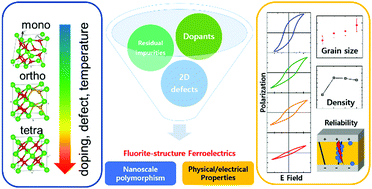
J. Mater. Chem. C, 2020,8, 10526-10550
https://doi.org/10.1039/D0TC01695K
Colloidal quantum dot hybrids: an emerging class of materials for ambient lighting
Electroluminescence light-emitting diodes enabled by hybridising colloidal quantum dots is an emerging technology for large-area and foldable ambient lighting. We summerise state-of-the-art scientific challenges and prospect their future development.
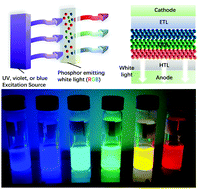
J. Mater. Chem. C, 2020,8, 10676-10695
https://doi.org/10.1039/D0TC01349H
Solution processed perovskite incorporated tandem photovoltaics: developments, manufacturing, and challenges
We discuss the emerging perovskite incorporated tandem solar technology and high-throughput printing methods for this technology.
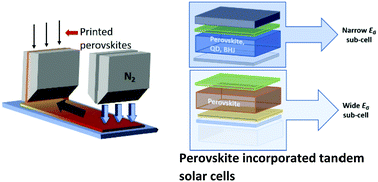
J. Mater. Chem. C, 2020,8, 10641-10675
https://doi.org/10.1039/D0TC01440K
Electrides: a review
Electrides are systems in which an electron is not bound to an atom and plays an active role in the structure. The three types of electron confinement have been confirmed.
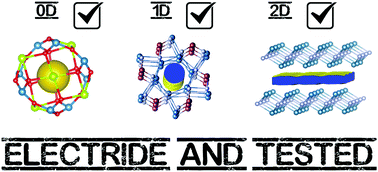
J. Mater. Chem. C, 2020,8, 10551-10567
https://doi.org/10.1039/D0TC01165G
Colloidal quantum wells for optoelectronic devices
Colloidal quantum wells, or nanoplatelets, are a promising class of solution-processable two-dimensional materials with properties well-suited for diverse optoelectronic devices.
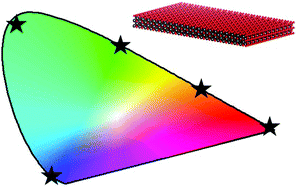
J. Mater. Chem. C, 2020,8, 10628-10640
https://doi.org/10.1039/D0TC01164A
Digital manufacturing of functional materials for wearable electronics
A review of the recent developments of digital manufacturing methods of functional materials for wearable electronics applications.
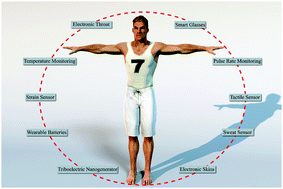
J. Mater. Chem. C, 2020,8, 10587-10603
https://doi.org/10.1039/D0TC01112F
Design of functional composite and all-inorganic nanostructured materials via infiltration of polymer templates with inorganic precursors
Robust and efficient approaches for the synthesis of materials with structure, porosity, and composition controlled at the nanoscale are highly important for a wide range of applications.
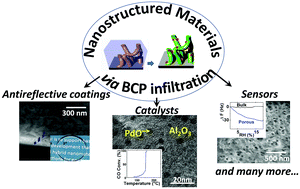
J. Mater. Chem. C, 2020,8, 10604-10627
https://doi.org/10.1039/D0TC00483A
Emerging interface materials for electronics thermal management: experiments, modeling, and new opportunities
State-of-the-art experiments and modeling, challenges, and future opportunities for developing high-performance interface materials for electronics thermal management.
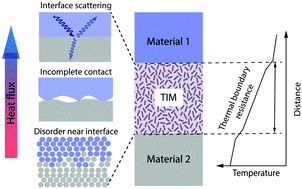
J. Mater. Chem. C, 2020,8, 10568-10586
https://doi.org/10.1039/C9TC05415D
Synthesis of small Ag–Sb–Te nanocrystals with composition control
Ternary telluride nanocrystals have gained increasing interest as materials for thermoelectric, optoelectronic, and phase-change memory applications. This paper presents an amide-promoted synthesis for Ag–Sb–Te colloidal nanocrystals with accurate composition control.
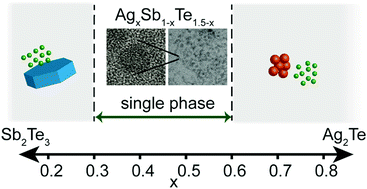
J. Mater. Chem. C, 2020,8, 15985-15989
https://doi.org/10.1039/D0TC00880J
Extracting molecular responses from ultrafast charge dynamics at material interfaces
A method is developed and applied to transient VSFG spectroscopy, to retrieve molecular dynamics in complex interfacial charge transfer processes.
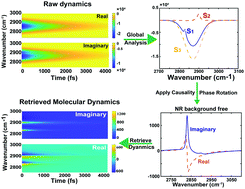
J. Mater. Chem. C, 2020,8, 12062-12067
https://doi.org/10.1039/D0TC01819H
Charge-transfer engineering strategies for tailored ionic conductivity at oxide interfaces
Based on the example of the p-type LaAlO3/SrTiO3 interface, we discuss charge-transfer phenomena that tailor the ionic conductivity along oxide heterointerfaces, by providing a confined space-charge layer as channel for oxygen ion conduction.
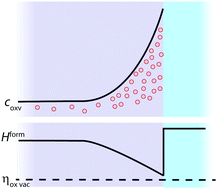
J. Mater. Chem. C, 2020,8, 11354-11359
https://doi.org/10.1039/D0TC01780A
Resolving in-plane and out-of-plane mobility using time resolved microwave conductivity
A strategy is demonstrated to evaluate the carrier mobility in-plane and out-of-plane using contactless time resolved microwave conductivity.
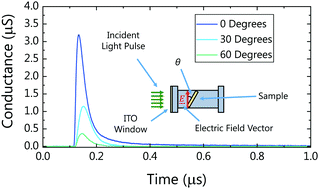
J. Mater. Chem. C, 2020,8, 10761-10766
https://doi.org/10.1039/D0TC00328J
Shape control of silver nanoparticles and their stability on Al2O3
Colloidal suspensions and films of aluminum oxide afford long-term stability to silver nanoparticles and play an important role in their light driven shape conversion.
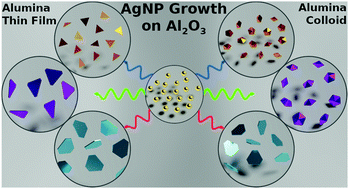
J. Mater. Chem. C, 2020,8, 10755-10760
https://doi.org/10.1039/D0TC01280G
Direct solid-state nucleation and charge-transport dynamics of alkali metal-intercalated M2Mo6S6 (M = K, Rb, Cs) nanorods
Microwave-assisted solid-state heating has been employed to induce anisotropic nucleation of M2Mo6S6 (M = K, Rb, Cs) nanorods without a template for the first time, and interfacial charge-transport properties of these rods are evaluated.

J. Mater. Chem. C, 2020,8, 10742-10748
https://doi.org/10.1039/D0TC01674H
Correlation between the strength of conjugation and spin–spin interactions in stable diradicaloids
Blatter based diradicaloids with p-diphenyl, fluorenyl and naphthyl bridges exhibit bridge dependent magnetic and optical properties.
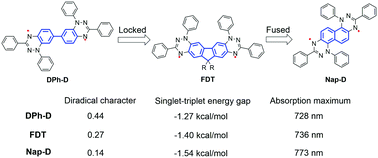
J. Mater. Chem. C, 2020,8, 10749-10754
https://doi.org/10.1039/D0TC00868K
Interfacial design of gold/silver core–shell nanostars for plasmon-enhanced photocatalytic coupling of 4-aminothiophenol
An interfacial designing procedure is presented for the fabrication of bimetallic hybrid nanomaterials to serve as highly efficient SERS substrate and plasmon driven catalyst for dimerization reaction of PATP utilizing Au/Ag core–shell nanostars.
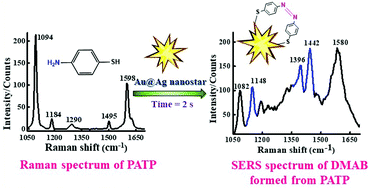
J. Mater. Chem. C, 2021,9, 15284-15294
https://doi.org/10.1039/D1TC03733A
Thermoelasticity in organic semiconductors determined with terahertz spectroscopy and quantum quasi-harmonic simulations
The thermomechanical response of organic semiconducting solids – an essential aspect to consider for the design of flexible electronics – was determined using terahertz vibrational spectroscopy and quantum quasiharmonic approximation simulations.
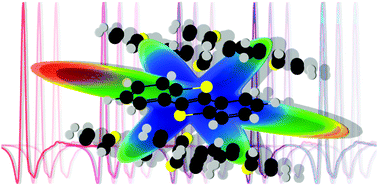
J. Mater. Chem. C, 2020,8, 10917-10925
https://doi.org/10.1039/D0TC01676D
A crystallographic approach to the short-range ordering problem in V1−xMoxO2 (0.50 ≤ x ≤ 0.60)
Local structure in V1−xMoxO2 (x ∼ 0.5) solved using combined total and single X-ray scattering.

J. Mater. Chem. C, 2020,8, 10907-10916
https://doi.org/10.1039/D0TC01173H
Tuning photoelectrochemical performance of poly(3-hexylthiophene) electrodes via surface structuring
The aqueous faradaic and capacitive properties of an organic semiconductor photocathode are finely tuned by via microstructure and wettability.
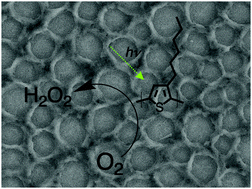
J. Mater. Chem. C, 2020,8, 10897-10906
https://doi.org/10.1039/D0TC01477J
Liquid phase transmission electron microscopy with flow and temperature control
A complete system for liquid phase TEM experiments at elevated temperatures with controlled on-chip flow.
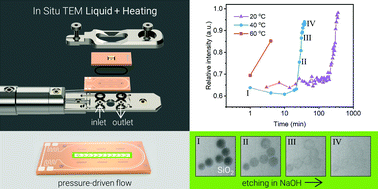
J. Mater. Chem. C, 2020,8, 10781-10790
https://doi.org/10.1039/D0TC01103G
Controlling the preferred orientation of layered BiOI solar absorbers
Bismuth oxyiodide has anisotropic transport properties, and optimal device performance requires control over its preferred orientation. We find that this preferred orientation can be finely tuned through the precursor and substrate temperatures.
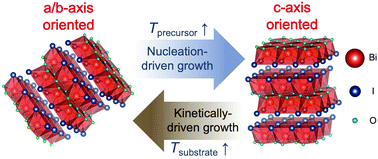
J. Mater. Chem. C, 2020,8, 10791-10797
https://doi.org/10.1039/D0TC02076A
The role of a dark exciton reservoir in the luminescence efficiency of two-dimensional tin iodide perovskites
We report on the excitonic luminescence of polycrystalline films composed of two-dimensional (2D) tin iodide perovskites.
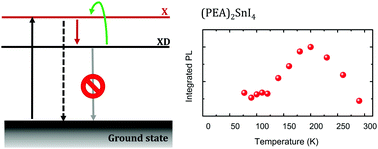
J. Mater. Chem. C, 2020,8, 10889-10896
https://doi.org/10.1039/D0TC01218A
Multiconfigurational dynamics explain photochemical reactivity and torquoselectivity towards fluorinated polyacetylenes
We determined the origin of a photo-torquoselective 4π-electrocyclic ring closing of hexafluoro-[5]-ladderene with multiconfigurational calculations and nonadiabatic dynamics simulations (256 1 ps CASSCF(6,7)/ANO-S-VDZP trajectories).
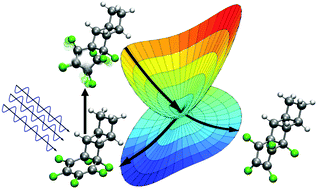
J. Mater. Chem. C, 2020,8, 10880-10888
https://doi.org/10.1039/D0TC01298J
Red-emissive poly(phenylene vinylene)-derivated semiconductors with well-balanced ambipolar electrical transporting properties
Herein, two new poly(phenylene vinylene) derivatives are designed and synthesized with lactam groups as the electron-deficient and lateral extending units and phenylethylene as the emissive element for achieving integrated optoelectronic properties.

J. Mater. Chem. C, 2020,8, 10868-10879
https://doi.org/10.1039/D0TC01174F
Bright mechanoluminescent luminogens even in daylight through close intermolecular interaction with the characteristic of hybridized local and charge transfer (HLCT)
Three D–A molecules are designed and synthesized via Friedel–Crafts reaction in one step. They exhibit unique HLCT state characteristics, which lead to very bright mechanoluminescence (ML) in FCO-TPA.
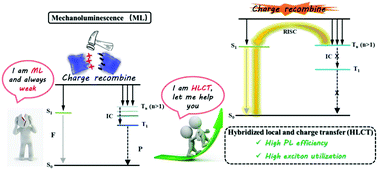
J. Mater. Chem. C, 2020,8, 10852-10858
https://doi.org/10.1039/D0TC01095B
Enhancement of the thermoelectric performance of DPP based polymers by introducing one 3,4-ethylenedioxythiophene electron-rich building block
The incorporation of one 3,4-ethylenedioxythiophene (EDOT) building block into a diketopyrrolopyrrole (DPP) based D–A conjugated polymer could facilitate the p-doping of a D–A conjugated polymer and improve thermoelectric performance.
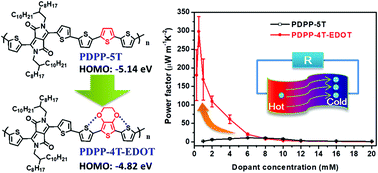
J. Mater. Chem. C, 2020,8, 10859-10867
https://doi.org/10.1039/D0TC01047B
Additive-controlled synthesis of monodisperse single crystalline gold nanoparticles: interplay of shape and surface plasmon resonance
The developed three-step synthesis of plasmonic gold nanoparticles allows outstanding control over their growth kinetic, size and habit.
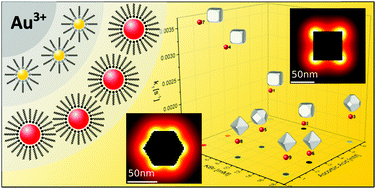
J. Mater. Chem. C, 2020,8, 10844-10851
https://doi.org/10.1039/D0TC01748E
Controllable tuning of Fabry–Perot cavities via laser printing
Facile and controllable tuning of Fabry–Perot cavities is realised via photoablation of polystyrene medium, which generates different colours due to the change of local refractive index.
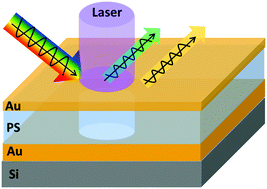
J. Mater. Chem. C, 2020,8, 10825-10830
https://doi.org/10.1039/D0TC01662D
Photoluminescence detection of symmetry transformations in low-dimensional ferroelectric ABO3 perovskites
Photoluminescence detection of symmetry transformations in low-dimensional ABO3 perovskites.
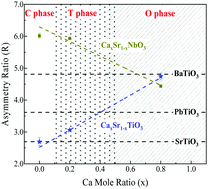
J. Mater. Chem. C, 2020,8, 10767-10773
https://doi.org/10.1039/D0TC01183E
Azobenzene-functionalized graphene nanoribbons: bottom-up synthesis, photoisomerization behaviour and self-assembled structures
We show the strategy of introducing azobenzene groups into graphene nanoribbons (GNRs), which not only endows GNRs with fast photo-responsiveness but also induces the self-assembly of the GNRs into ultra-long nanowires.

J. Mater. Chem. C, 2020,8, 10837-10843
https://doi.org/10.1039/D0TC01609H
Organic and quantum-dot hybrid white LEDs using a narrow bandwidth blue TADF emitter
By mixing a blue organoboron emitter, and green/red quantum dots, hybrid white LEDs with the primary RGB sharp peaks respectively at 464, 538 and 622 nm were demonstrated, accompanied with three individual bandwidths of 30, 34 and 31 nm.
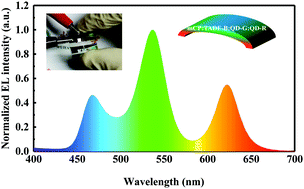
J. Mater. Chem. C, 2020,8, 10831-10836
https://doi.org/10.1039/D0TC01942A
Ferrocene-based hyperbranched polymers: a synthetic strategy for shape control and applications as electroactive materials and precursor-derived magnetic ceramics
Ferrocene-based hyperbranched polymers were prepared with different shapes of spheres and hollow polyhedra, and the 3D topological structures were studied as electroactive materials and precursor-derived magnetic ceramics, respectively.
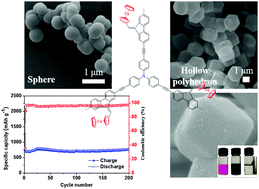
J. Mater. Chem. C, 2020,8, 10774-10780
https://doi.org/10.1039/D0TC01380C
An energetics perspective on why there are so few triplet–triplet annihilation emitters
Solar cell efficiency may be increased by utilizing photons with sub-gap energies via triplet–triplet annihilation (TTA). However, few TTA chromophores are currently known. This can be understood from the energetics perspective.

J. Mater. Chem. C, 2020,8, 10816-10824
https://doi.org/10.1039/D0TC00044B
Preparation of WS2–PMMA composite films for optical applications
Monolayer-enriched liquid phase exfoliated WS2 is embedded into a polymer matrix. The resultant thin films are homogeneous, mechanically robust and smooth. Optical monolayer properties (e.g. photoluminescence) of the WS2 are retained in the films.
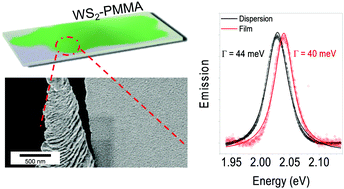
J. Mater. Chem. C, 2020,8, 10805-10815
https://doi.org/10.1039/C9TC06783C
Achieving multiple emission states and controllable response behaviour in thermochromic luminescent materials for security applications
In this work, thermochromic luminescent materials with three emission states and controllable thermochromic transition temperatures were developed for multilevel anti-counterfeiting and high-security level information storage.
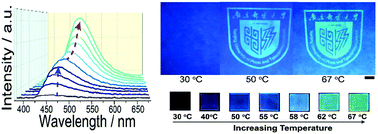
J. Mater. Chem. C, 2020,8, 10798-10804
https://doi.org/10.1039/C9TC06627F